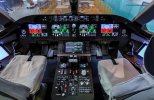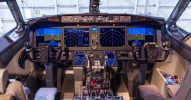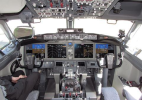beijingwalker
ELITE MEMBER

- Joined
- Nov 4, 2011
- Messages
- 65,195
- Reaction score
- -55
- Country
- Location
China Eastern takes delivery of the world's first made-in-China C919 jet
Fri, December 9, 2022 at 11:53 AMChina Eastern takes delivery of the world's first made-in-China C919 jet
Logo of China Eastern Airlines is pictured in BeijingBEIJING/SYDNEY (Reuters) - The world's first C919, a Chinese-made narrowbody jet, was delivered to launch customer China Eastern Airlines in Shanghai on Friday and took off for a 15-minute flight to mark the historic moment.
The plane, a rival to the Airbus A320neo and Boeing 737 MAX single-aisle jet families, is expected to make its maiden commercial flight next spring, according to state-owned Xinhua News Agency.
It was certified for safe operations in September and mass production in November.
The plane delivered to China Eastern has 164 seats and was painted with "the world's first C919" on its side in Chinese and English. Its maiden route will be between Shanghai and the capital Beijing, industry sources have said.

The single-aisle C919 has been built to compete with Boeing’s 737 and Airbus’ A320. Photo: AFP
China Eastern said on Friday it plans to receive the remaining four of its first batch of C919 orders over the next two years, according to Shanghai's The Paper. That compares with earlier plans to get all four next year.
The airline did not respond immediately to a request for comment.
China's narrowbody jet ambitions intensified over the last few years amid conflicts with the United States from trade to technology that made China increasingly concerned about being overly dependent on Airbus and Boeing.
Commercial Aviation Corp of China (COMAC) is expected to produce around 25 C919s per year by 2030, far lower than the current monthly rates of narrowbody production at its rivals, according to Jefferies analysts.
COMAC did not immediately respond to request for comment.
The C919 currently relies heavily on Western components, including engines and flight control systems, from companies such as GE, Safran and Honeywell International.
China is trying to raise the proportion of domestic parts in the C919 and an alternative engine called the CJ-1000A is under development.
China Eastern takes delivery of the world's first made-in-China C919 jet
The world's first C919, a Chinese-made narrowbody jet, was delivered to launch customer China Eastern Airlines in Shanghai on Friday and took off for a 15-minute flight to mark the historic moment. The plane, a rival to the Airbus A320neo and Boeing 737 MAX single-aisle jet families, is...








